

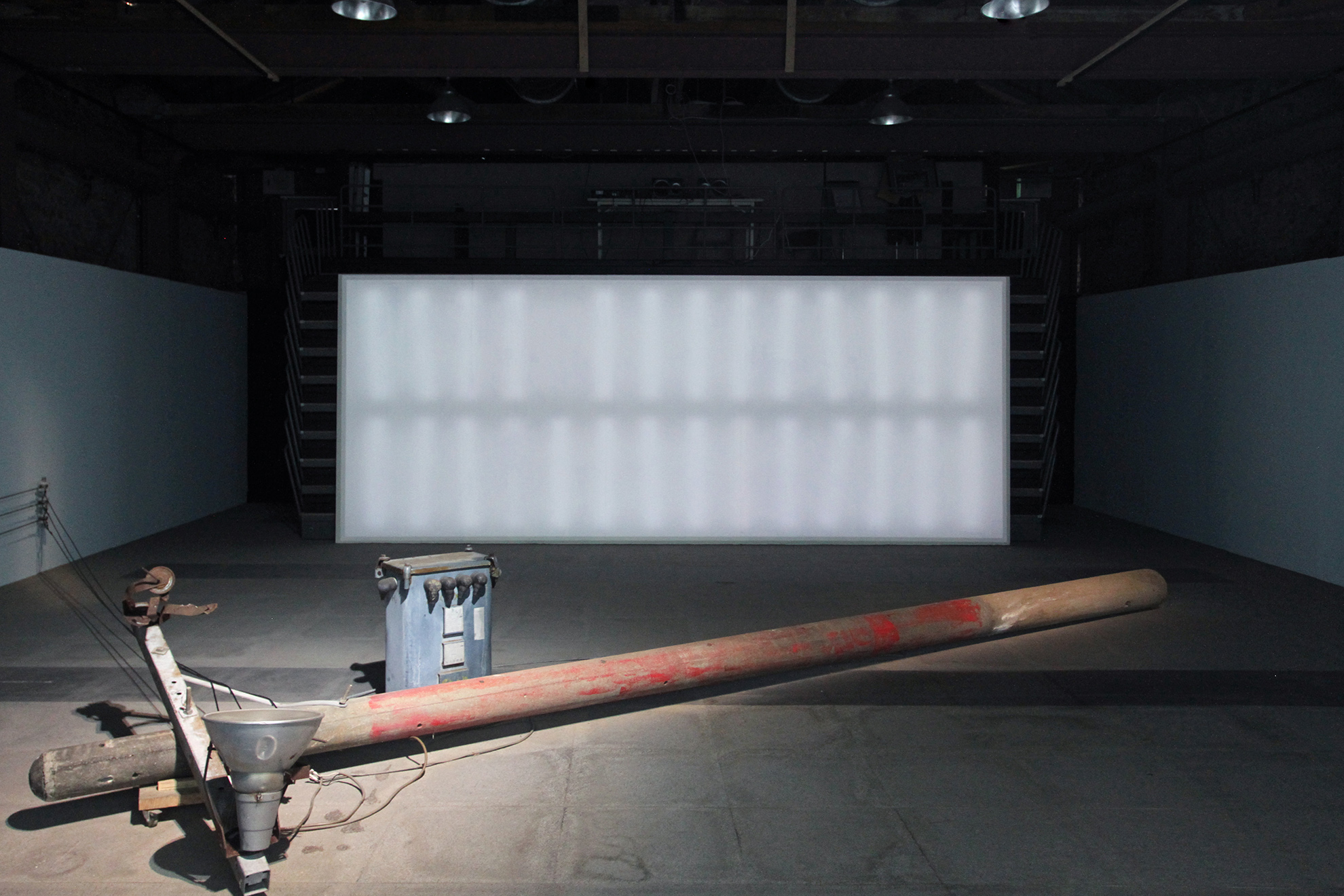



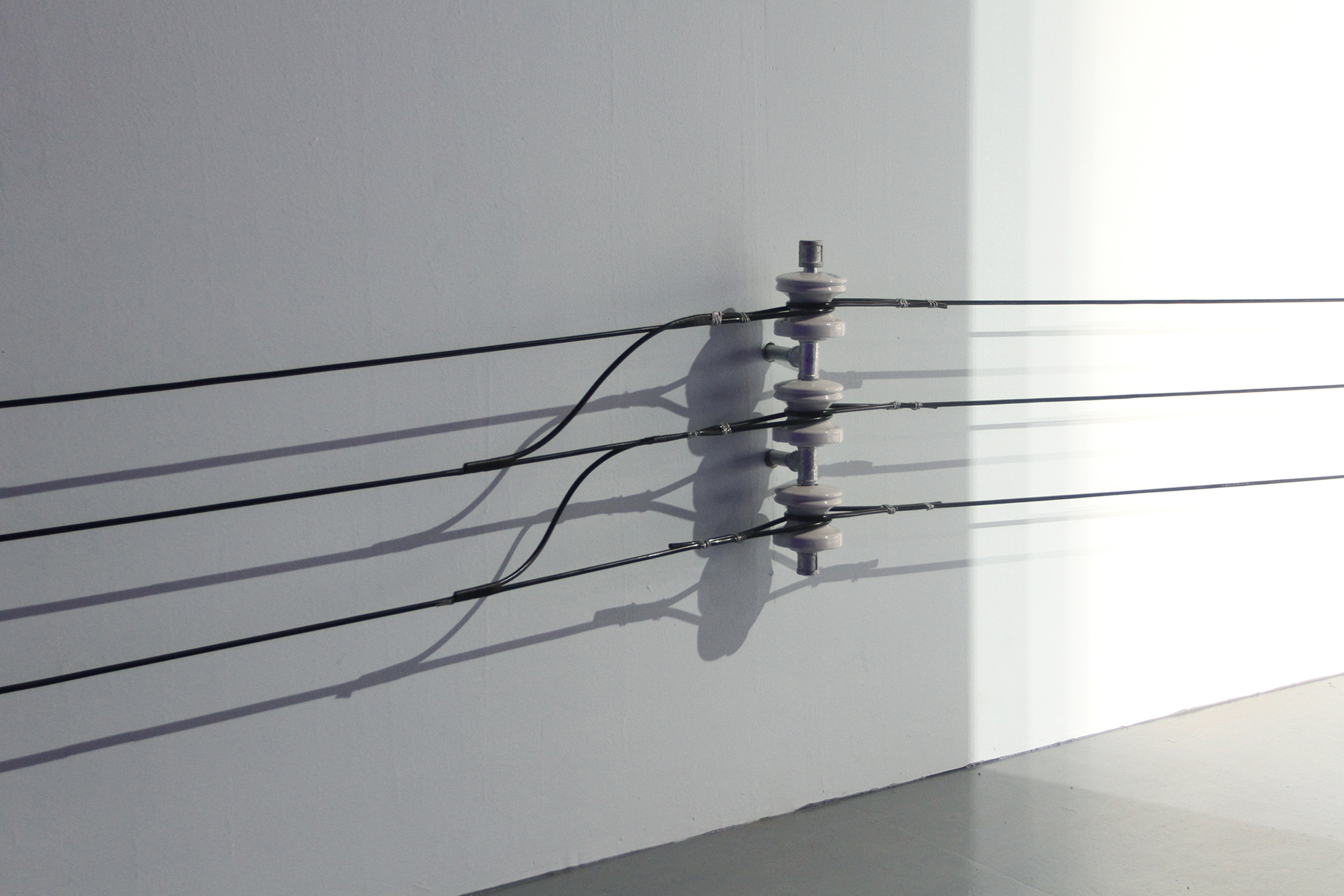
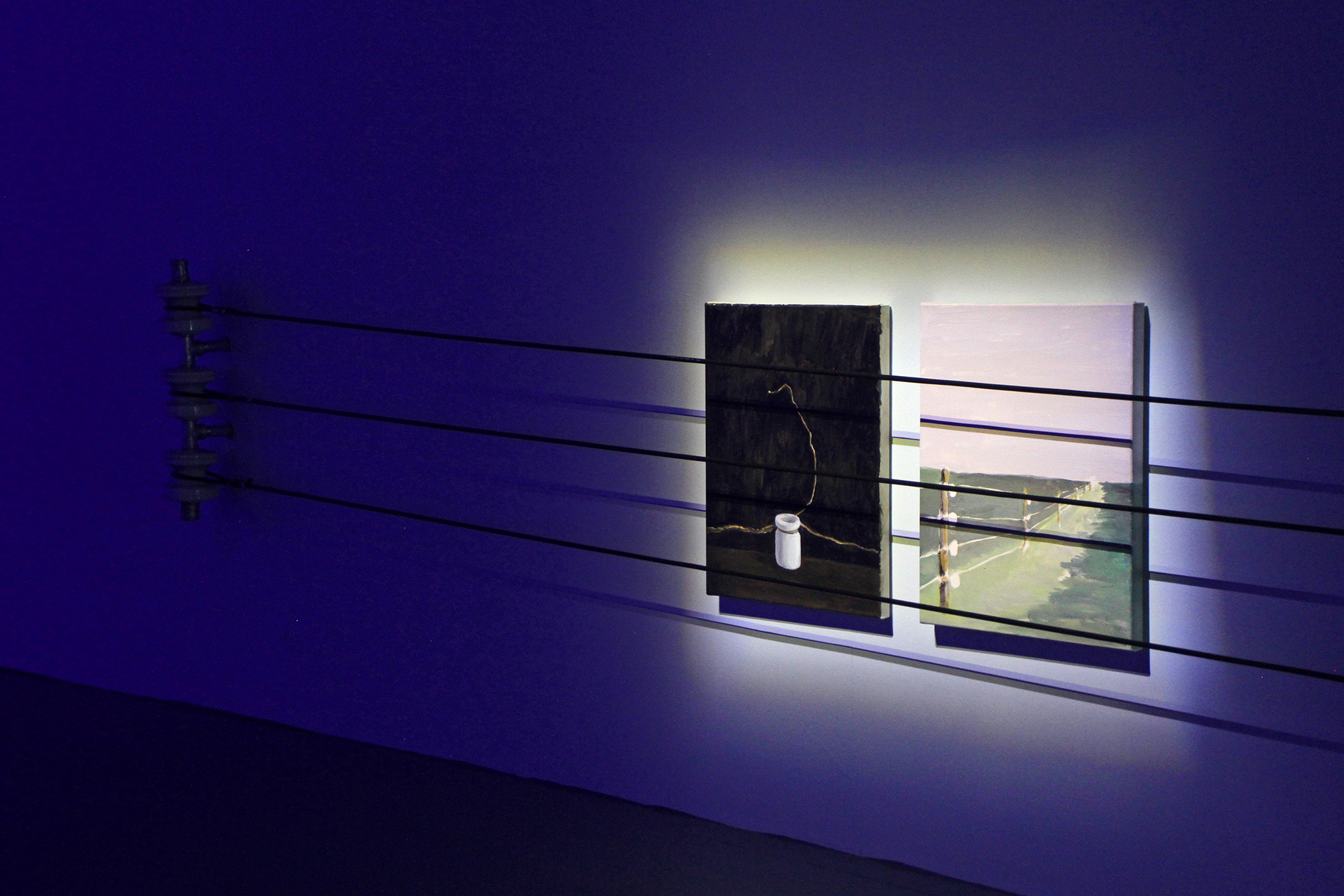
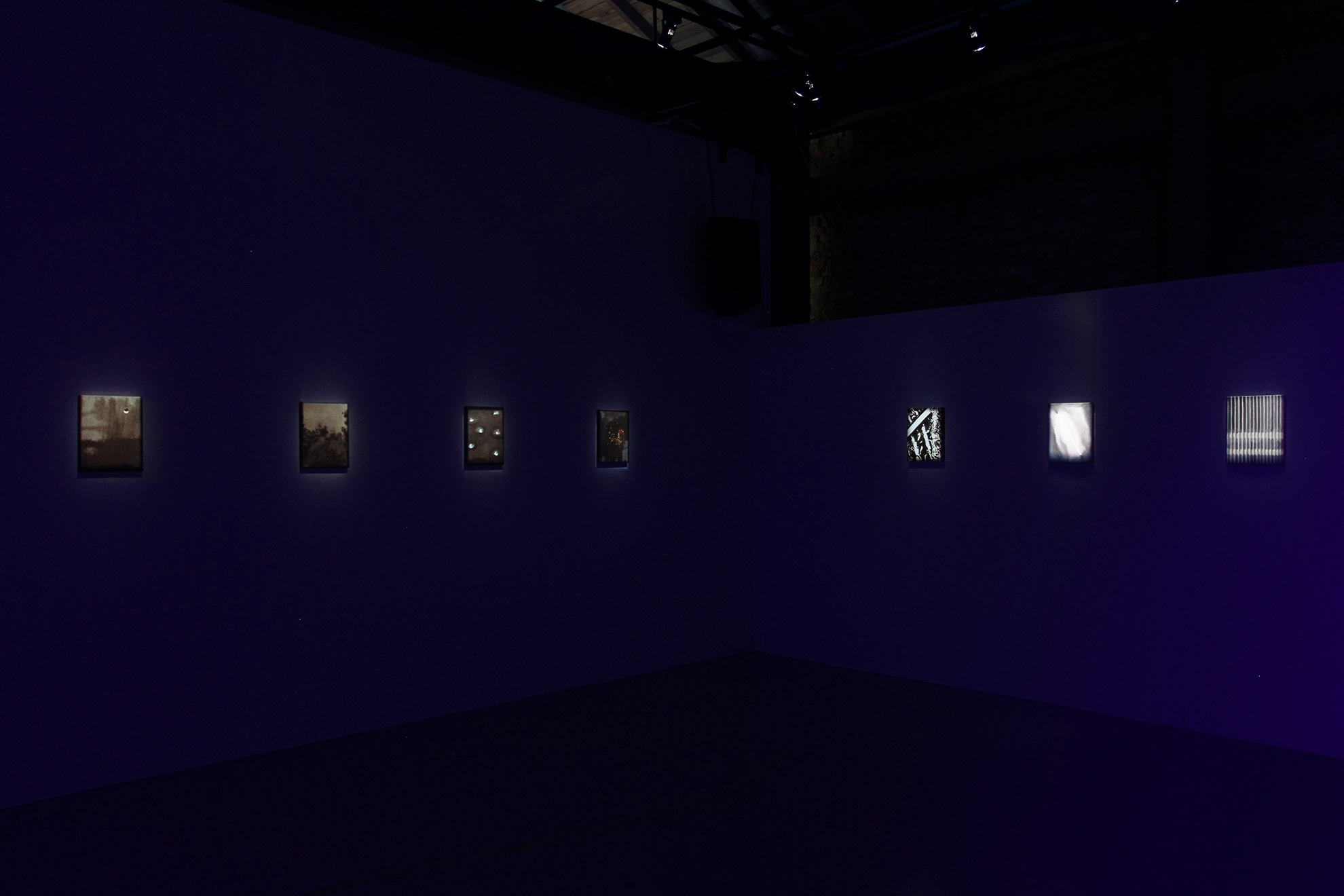
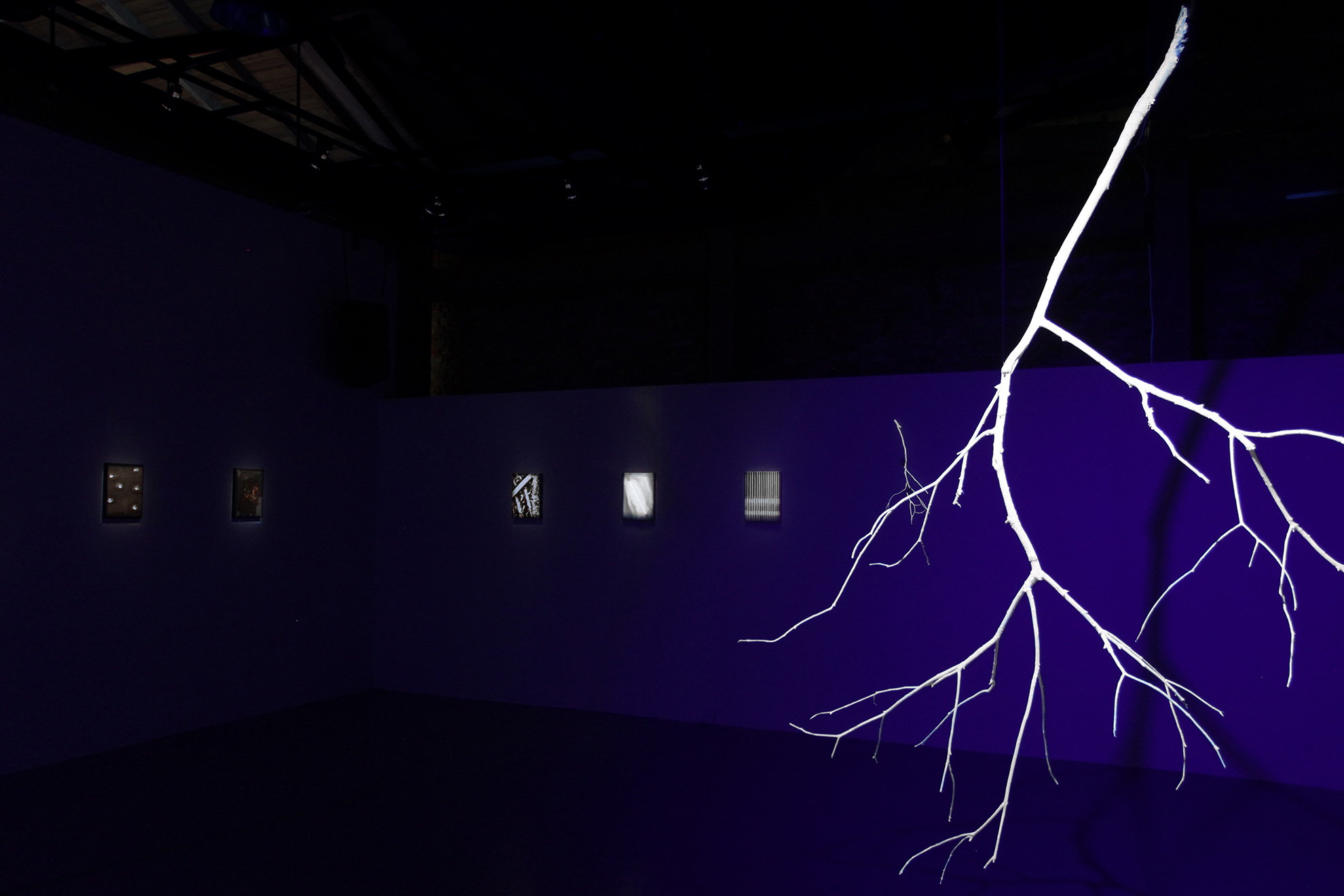

高壓電-謝佑承個展
蕭壠文化園區A2倉庫
HIGH VOLTAGE-HSIEH Yu-Cheng solo exhibition
Saio-Long Cultural Park Residency Artists Exhibition
2019
駐村期間,我在文資建材銀行內認識了從建築物中拆除的「礙子」——由青色釉料陶瓷製成,一種古老耐高壓電的絕緣體,早期被廣泛安裝於木造建築的懸樑上,負責將通電的銅線固定於室內,成為最早使用電力系統的現代設備。仔細比對每顆礙子,它的大小、尺寸不像工業化生產的規格物件,還留有著匠藝手感的溫潤特質,細節各異其趣。在今日電線甚至已經地下化的時代裡,我難以想像曾有一個時期,人的徒手與知識能夠挑起龐大的電與能量,與之駕馭搏鬥。如今,經塑膠包覆的電線不再像傳統銅線一般容易碰觸走火,但礙子仍使用於戶外的高壓電線桿上,為城市維繫電力網絡。
現代化的電力開啟了人類歷史的新頁,也帶來第二次工業革命。電燈的發明,讓人們不再依晝夜而起居,擁有了未曾有過的自由時間,燈火通明的夜晚彷彿另一個白晝。也因此,電力重新定義了現代社會的條件,影響了戰爭、殖民、商業與文化。日本作家谷崎潤一郎曾在《陰翳禮讚》一書中提到他對電力與黑暗、甚至是對現代性的看法:電燈雖然照明了夜晚,使得原先沒有被利用到的時間與空間得以被人們擴充運用,卻也抹煞了陰翳之處——在電力尚未抵達以前,人們生活於遮蔽處中,與陰影交融誕生的感知與美學。我不禁重疊起眼前產業道路旁懸掛破損的棄置燈箱、倚著路燈的寂寥黑夜、彼此通電的身體,在經過了一個光與亮的盛世後,什麼使得它們如今身體衰敗,又是什麼仍留守於黑暗之處?
此次駐村的作品將展出一系列繪畫、物件與空間裝置,以電力系統為索引,進一步想像、蒐集地方歷史、殖民地、科技技術與現代化社會的縫隙,也許企及它所不可凌駕的速度,再訪其歸途。
During my residency, I knew the object, “pin insulator”, from the collections of the Heritage Architectural Materials Vault. Dismantled from buildings, the pin insulator, made of glazed porcelain in cyan, was an antique high voltage insulator which had been widely installed on the overhead beams in wood structured buildings to fix the copper wires as a conductor of electricity indoors. So it was one of the earliest devices used in the modern electricity system. When carefully comparing each pin insulator, I found out that unlike those industrially mass produced objects which have certain specifications in sizes or dimensions, it still possesses the touch of human warmth as well as subtle variations in details deriving from its handcrafting nature. Living in an era that electrical power is now supplied underground, I can hardly imagine there was a period of time when people could uphold this massive electricity system and power while dominating and gaining control over it simply with bare hands and knowledge. Although nowadays, wires coated with plastic won’t spark easily if touched as traditional uninsulated copper wires, pin insulators are still having a role on those high-voltage utility poles to maintainthe reliability of electricity gridfor the cities.
Modern electricity has opened a new chapter in human’s history as well as advanced the Second Industrial Revolution. The invention of electric lighting has enabled us to be active any time of day or night and to acquire free time that we had never possessed. The nights are shined so brightly just like daytime. Therefore, electricity has redefined the conditions in modern society by influencing wars, colonization, business, and culture. In the book, In Praise of Shadows, Junichiro Tanizaki elaborated his idea about electricity, darkness, and even modernity: although humans can take advantage of and further expand time and space that hadn’t been used before thanks to illuminated nights, areas under shadows are being forgotten and erased. Before electricity was supplied, humans were living in shades while shadows were part of our life creating certain kind of perceptions and aesthetics. I can’t help but start to visualize the overlapped images of the broken, disused lightboxes hung alongside the industrial roads, the solitary, lightless nights accompanied by street lamps, and their electrified bodies connecting to each other. After the glorious time of brightness and illumination, what causes their declination today? And what remains staying behind in the darkness?
The project of my residency will include a series of paintings, objects, and space installations with reference to the electricity system. It is my intention to further imagine, to collect local historical materials, to explore colonization, to investigate gaps between technology and modern society by outspeeding its development while going back to its originality.
Related works and text


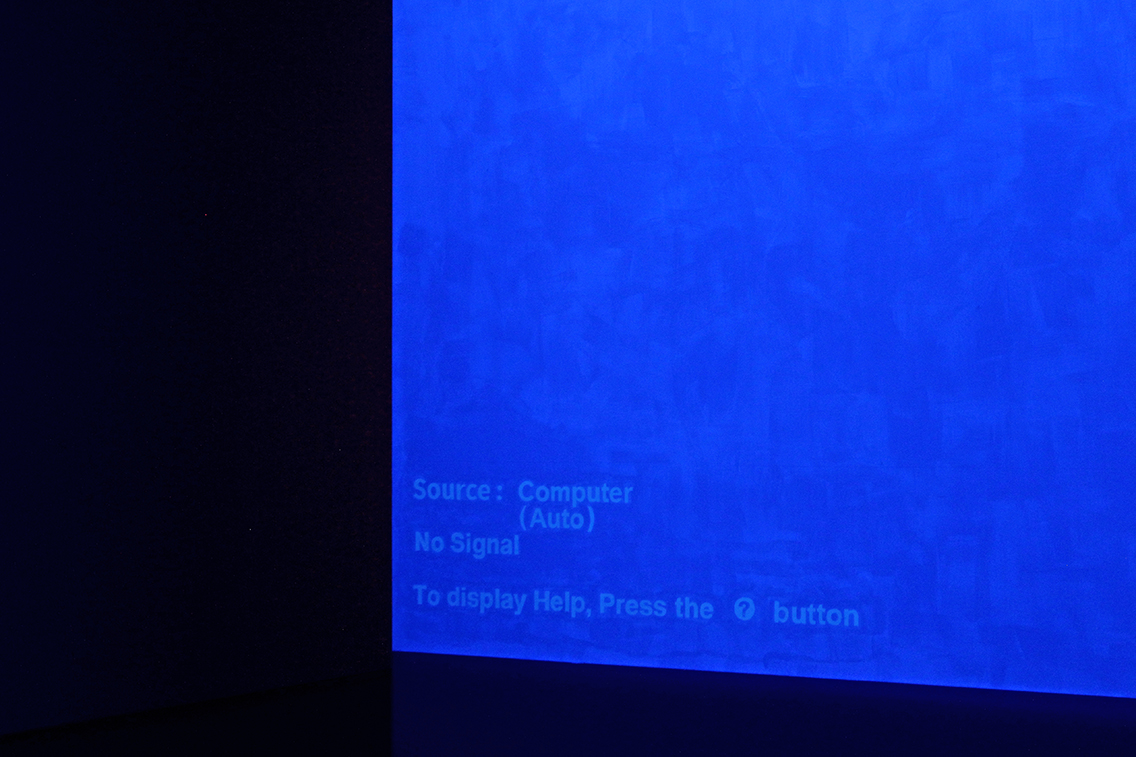



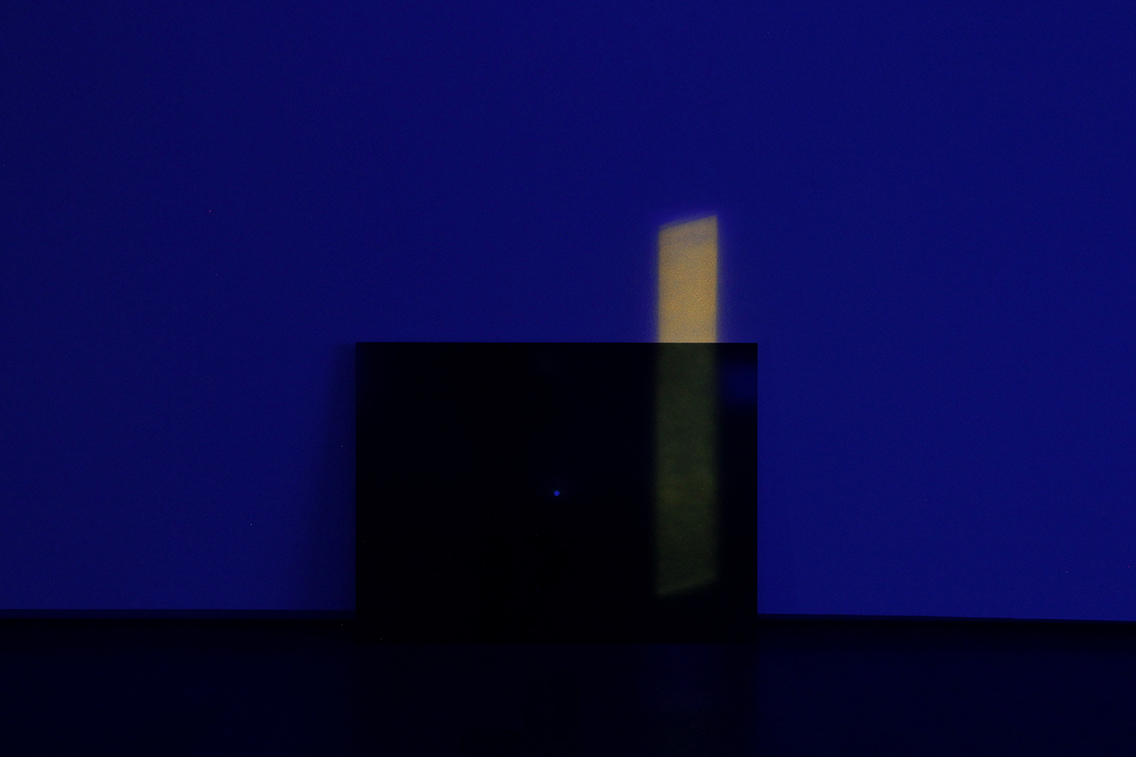

再現式
誠品畫廊
Represent
Eslite Gallery, Taipei
23 November — 29 December 2019
誠品畫廊於11月23日至12月29日推出聯展「再現式」,展出陳道明、展望、曲德義、王淑鈴、謝素梅、王雅慧、謝佑承等多位藝術家的精彩創作。藝術的創造即是對於生活樣貌的「再現」,暗示著藝術帶給我們的思考與想像,或許是揮別了眼前真實的風景,藝術家用感知經驗的介入再建出新的景象;也或許是擁抱快速淹沒生活的科技,以藝術的詮釋角度讓不具形體的數字或科學數據再次有了新樣貌。「再現式」一詞,即一種創作非單向的新時間軸,更強調出作品「再現」的時態或是其某種狀態,將時間因子編織出作品的深度和廣度,交織生活與藝術的可能性。
在展望的作品裡總能感受到切片的時空狀態,《鏡花園》透過不規則起伏的拋光鏡面(石鏡),拍攝某一瞬間的風景,映照出扭曲的景象,最後將「石鏡」所見的景色,轉化為窗外風景的意象;《隱形》系列作品結合了流體力學演算法及3D列印的技術,並以手工敲製不銹鋼將演算數據具象化,再現了展望掉入火山熔岩中的異變想像。謝佑承則擅長使用複合媒體與創作空間裝置,在他的作品裡會看到十分熟悉的日常景象,但卻使觀眾發現臨場的觀察誤點,探回事物本身的可能性,再現事物的本質是什麼?作品對其發問,顛覆大家日常的認知經驗。陳道明曾自述:「畫畫是種發現,是種意識與潛意識的自我發堀」,他將過去的記憶綜合當下的感受,再度呈現在畫面中,作品成為非單向的時間敘述,是一再的自我發掘意識與潛意識。
本次展覽「再現式」讓我們遊走在藝術創造的時態中,藝術家如何將他主觀的所聞所知,再現其作品客觀的樣貌,思索藝術與外在現實的關係,使作品的樣態回應出這個世界的本質。
Related works
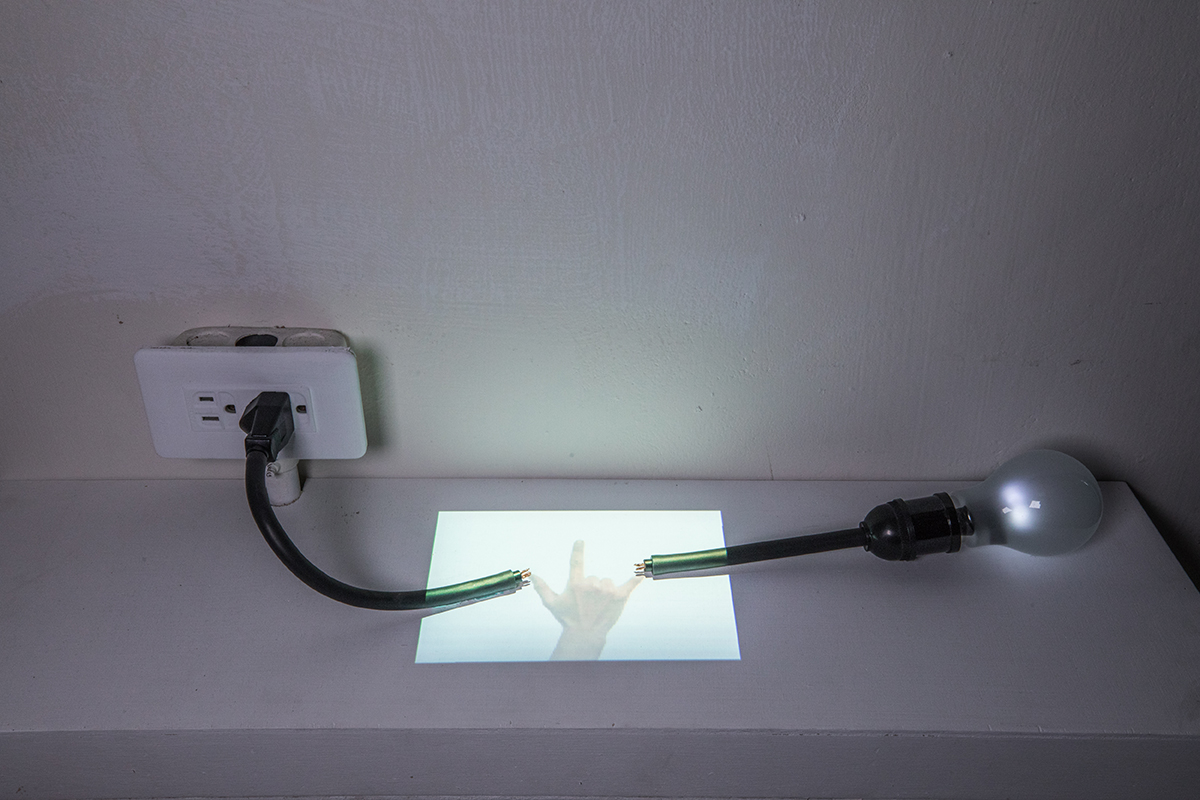
駭.zip
口丁,寶藏巖藝術聚落,台北
Hacking.zip
OpenLab, in Treasure Hill Artist Village, Taipei
17 April — 1 May 2019
「駭客」常被認為是一群惡意攻擊電腦以勒索,或是純粹從惡搞的行為中取得樂趣的反派人物。相反地,他們也可能是面目模糊,卻仍享有高度讚譽的社會英雄,成為當代的集體對有效攻擊的寄託,當政府或企業越線地違反了人權倫理,駭客便匿名地進行網路攻擊以造成對方的混亂。在面臨劇烈環境災難、恐怖攻擊、金融科技資本主義的世界性焦慮中,駭客幾乎取代了漫威中的各路英雄。然而,「駭」的應用相當寬廣,具有創造力的作品、手法能被稱為駭,最初使用hacker一詞的麻省理工學院學生只是恰好針對了電腦科學領域。
既然駭客能出現在各種領域,代表每個人都可能在生活的經驗中產生作品。生活駭客(life hack)描述的是能夠利用物品或工具來讓生活更輕鬆方便的能力,也意旨某種具有巧思的自造(DIY)。倘若「駭」一詞具有多元的想像力,能夠觀察、處理個人或集體所面臨的困境,我們是否可以期待藉由藝術家的手勢,讓展覽現場成為某種生產發明的場址?此次邀展的藝術家從生活現象到個人情感技術,嘗試藉由藝術作品來駭入生活,抽絲剝繭出生活中的各種場景,專注於日常中的空缺,以科技工具、書寫或改造來解壓對於「駭」的定義。
Hackers are commonly recognized as criminals who spread computer virus for ransom or for fun, but they could also be heroes when they hack to punish governments or enterprises who act against human ethics. Hackers become representative of justice for people who live under the anxiety of environmental disaster, horror attacks, or the expansion of financial and technological capitalism.
In fact, the term “hack” refers to acts not just in the field of computer science, but in broader contexts too. Back in the 1960s, it was used to describe any acts with creativity. Here comes the concept of “life hacking”, which refers to the ability of transforming or renovating ordinary, handy objects into something that make life easier and more convenient.
There is diversity of the word ‘hack’ in many different uses, this exhibition is trying to ask: How do art and hack co-exist in a work? How to imagine an art exhibition as a place full of hacking and producing by artists? The artists attempt to do life hacks with their keen sense of awareness, to tackle their daily life problems head-on, also unzip the meanings of hack by their works with technology, writing and playing tricks.
Related works
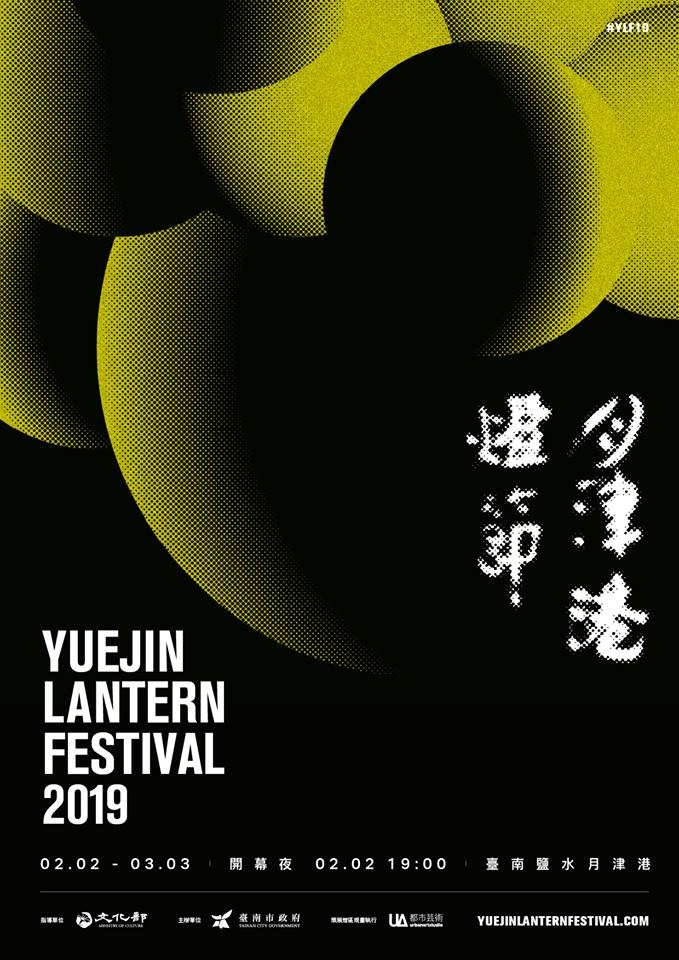
隨光呼吸 - 月津港燈節 2019
Yuejin Lantern Festival 2019
[Group Exhibition]2020.02.02 – 03.03
臺南市鹽水區月津港
Yuejin Yanshui Tainan
鹽水,歷史文化源遠流長的古鎮,得天獨厚擁有一道與在地生活息息相關的「母親之河」――月津港,因此帶來最特別、具水域的燈節場所。臺南市政府年年於此舉辦「月津港燈節」,主要特色即是讓光之美與鹽水原貌風情互襯,營造與地景深深結合的藝術氣氛。每一屆燈節,並各有與時令、人文、自然脈絡相連的策展核心。2019年的主題則為「隨光呼吸」,繼續邀請了國、內外擅長新媒體與科技藝術的當代藝術家參展,在鹽水現場打造燈光裝置。這兒聞名國際的「鹽水蜂炮」,也正是在此佳節期間以震撼的火花電光開啟新春氣象。表達虔誠信仰的「鹽水蜂炮」、浪漫呈現藝術的「月津港燈節」,總是攜手在一年之初於鹽水小鎮隨光呼吸、動身,這是與居民、訪客浪漫、不變的美麗約定。
Our journey begins at the point where the river and sea embrace, old Yuejin Port. As we start the adventure together, we follow the river, down meandering pathways, as distant lights guide us to an artistic field. Three “timelines” divide the location into three distinct areas. The timelines are called "Travel of Time", "Call of the Environment" and "My Scenery with You". Within each timeline is a different representation of the moon. The timelines each encapsulate a different feeling, and a different sensory experience for the visitor. Thus, three moons, three scenes, three moods. The festival location reflects the idea of cyclical movement. No matter where we begin on our journey, entering into one of the three timelines, as we walk together into scenery that is a blend of art, local customs and natural splendor, we finally return to our point of ingress. Thus, we return to the place our journey began.